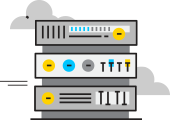Code signing is a digital procedure used for certifying that a certain block of code has not been tampered with and originates from a specific source. It provides an additional level of assurance by verifying the integrity of code executed on computers or downloaded from the internet. Code signing serves to protect users from rogue software and malware by confirming that the software they are downloading and installing is genuine, and from a trusted source.
The Origins and Evolution of Code Signing
The inception of code signing can be traced back to the early days of the internet when the growth of online activities necessitated improved security measures. In the mid-1990s, Netscape, one of the pioneers in the web browser industry, introduced object signing, which allowed Java applets to access certain restricted APIs, a concept that is the predecessor of modern code signing.
In 1996, Microsoft introduced Authenticode, its proprietary technology for code signing, alongside Internet Explorer 3.0. This represented the first major deployment of code signing in a consumer-oriented context, and established the model of using certificates issued by trusted third parties, or Certificate Authorities (CAs), to vouch for the identity of the signer.
Since then, code signing has evolved and is now a widely adopted standard in the software industry for maintaining and assuring the integrity and authenticity of distributed code.
Understanding Code Signing in Depth
Code signing involves the use of a cryptographic hash to sign the software’s code. If the code is changed after it is signed, the signature will become invalid. A code signing certificate, issued by a trusted Certificate Authority (CA), is used to create this signature.
When a user downloads signed software, their system will verify the signature using the public key corresponding to the private key that was used to create the signature. If the signature verifies correctly, the system will then trust the software and allow it to run.
The Internal Mechanism of Code Signing
Code signing works through a system of public key cryptography. Here is a step-by-step breakdown of the process:
- A developer writes the code for the application.
- The developer applies a hash function to the code, producing a unique hash value that represents the content of the code.
- The developer then uses their private key to encrypt this hash value, creating a digital signature.
- The developer appends the digital signature and their public key (embedded within their certificate) to the application.
When a user downloads and runs this application:
- The user’s system uses the developer’s public key to decrypt the digital signature, revealing the original hash value.
- The system applies the same hash function to the downloaded application, generating a new hash value.
- If the new hash value matches the decrypted original hash value, the system concludes that the code has not been altered since it was signed, and allows it to run.
Key Features of Code Signing
- Integrity: Code signing assures that the software code has not been altered or tampered with since being signed.
- Authentication: It verifies the identity of the software publisher, increasing trust.
- Non-Repudiation: The publisher cannot deny their association with the code once it has been signed.
- Timestamping: The signature includes a timestamp that indicates when the code was signed.
Types of Code Signing Certificates
There are generally two types of code signing certificates:
| Type of Certificate | Use |
|---|---|
| Self-signed certificate | Developers generate their own certificate and use it to sign their code. This method is generally not recommended for software distributed to the public, as there is no trusted third party to vouch for the authenticity of the signer. |
| Certificate from a trusted CA | Developers obtain a certificate from a trusted Certificate Authority. The CA verifies the identity of the developer before issuing the certificate. This is the most commonly used type of code signing certificate, and is essential for publicly distributed software. |
Using Code Signing: Problems and Solutions
Code signing is a powerful tool for ensuring the integrity and authenticity of software, but it is not without its challenges:
Problem: Private key security is critical. If a private key is stolen, someone else can sign software that appears to come from the original developer.
Solution: Developers need to protect their private keys with strong security measures, such as secure key storage, encryption, and strong passwords.
Problem: If a developer’s certificate is compromised and used to sign malicious software, the damage can be widespread and difficult to undo.
Solution: Certificate Authorities have processes in place to revoke certificates that have been compromised. However, this requires the CA to be notified of the compromise in a timely manner.
Code Signing: Main Characteristics and Comparison with Similar Terms
While code signing shares similarities with other security concepts like SSL/TLS, there are some differences:
| Concept | Description |
|---|---|
| Code Signing | Used to verify the integrity and origin of a software application or script. Code signing ensures that a piece of code has not been altered since it was signed. |
| SSL/TLS | Used to encrypt data in transit between a client (e.g., a web browser) and a server. SSL/TLS does not ensure the integrity of the server’s software, but instead ensures that the data transmitted between the client and server cannot be intercepted or altered. |
Future Perspectives and Technologies in Code Signing
As the technology landscape evolves, so too will code signing. Future perspectives on code signing revolve around enhancing its current capabilities and adapting to new platforms and technologies.
One trend is the development of new standards and practices to handle the scale and complexity of software distribution in the era of IoT (Internet of Things) and cloud computing. Additionally, the increased focus on cybersecurity may lead to the development of more sophisticated and robust algorithms for code signing.
Blockchain technology also presents interesting possibilities for decentralized and transparent code signing, with smart contracts automating the process and making it even more secure.
Proxy Servers and Code Signing
Proxy servers, like those provided by OneProxy, work as intermediaries between end-users and the internet. They can provide a number of benefits, including increased anonymity, bandwidth savings, and improved security.
Proxy servers do not directly interact with code signing processes, but they can enhance the security layer of a network. For example, a proxy server can provide an additional layer of protection against external threats, and combined with code signing, can ensure a more secure and reliable online environment.
Related Links
- Microsoft’s Authenticode technology: https://docs.microsoft.com/en-us/windows/win32/seccrypto/authenticode
- Overview of Code Signing by GlobalSign: https://www.globalsign.com/en/blog/what-is-code-signing/
- Code Signing for new platforms: https://developer.apple.com/documentation/security/notarizing_your_app_before_distribution
Please note that the above links were active and relevant at the time of writing this article.




